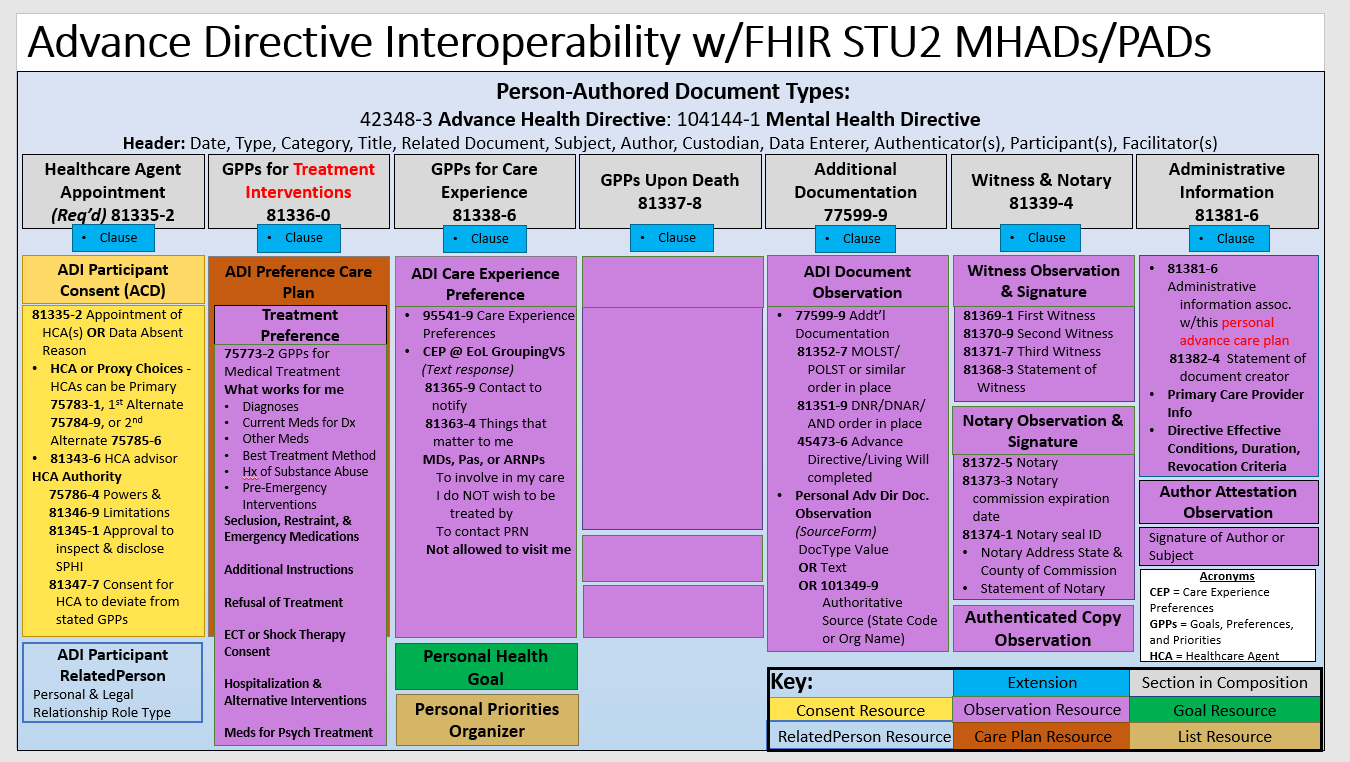PACIO Advance Directive Interoperability Implementation Guide, published by HL7 International / Patient Empowerment. This guide is not an authorized publication; it is the continuous build for version 2.1.0 built by the FHIR (HL7® FHIR® Standard) CI Build. This version is based on the current content of https://github.com/HL7/fhir-pacio-adi/ and changes regularly. See the Directory of published versions
Mental health advance directives are legal documents that allow individuals to specify their preferences for mental health treatment in advance, in case they later become unable to make these decisions themselves due to mental illness. These directives can outline what types of treatments a person does or does not want, including medications, hospitalization, and therapies. They can also appoint a specific person, known as a healthcare proxy or agent, to make decisions on their behalf.
The main purposes of a mental health advance directive are to ensure that an individual’s treatment preferences are respected and followed during periods when they might not be able to communicate their wishes due to their mental health condition. This can provide reassurance to both the individual and their family, and can also help in preventing conflicts or confusion about the best course of action during a crisis.
The specifics of how to create and implement a mental health advance directive can vary by jurisdiction, so it is important to consult local laws and possibly seek legal advice when considering creating one.
Structurally, MHAD shares the same ADI header as the PACP document. It differs in the related clauses. A summary of the document structure is shown below:
